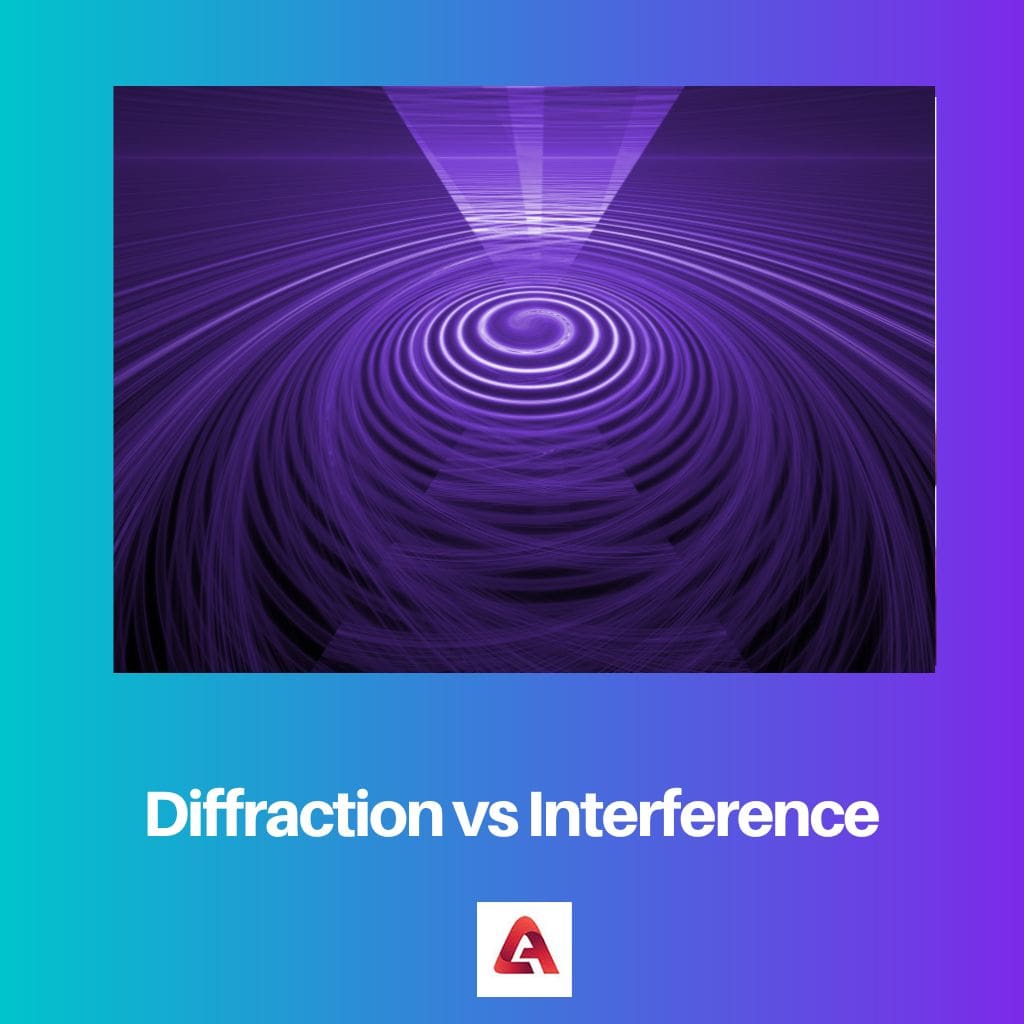Key Takeaways
- Diffraction occurs when waves pass through an aperture or around an obstacle, resulting in the bending and spreading of waves.
- Interference is where two or more waves superimpose, leading to a new wave pattern with constructive and destructive interference regions.
- Diffraction results from the interaction of waves with obstacles, while interference arises due to the interaction of waves.

What is Diffraction?
The term “diffraction” was first coined by an Italian scientist named Francesco Maria Grimaldi. Fundamentally, diffraction is the spread of waves around obstructions. It happens with light, sound, and electromagnetic radiation, like X-rays and gamma rays.
During the process, the diffracting object becomes the secondary source of the wave. It comes from the different facets of the same wave. Here minima can never be zero, and the results in the pattern have poor contrast between dark and bright or maxima and minima.
The width of different fringes vary in their width, and no one matches the other. Apart from this, diffraction can not take place without the presence of an obstacle.
This incident also creates fewer fringes that vary not only in width but also in their formed darkness. The bright bands also carry diverse intensity. They do not match each other.
What is Interference?
The term “interference” was created by Thomas Young. It is taken from Latin. The meaning of the word is “strike between”.
To make interference comprehensive enough, we can say it occurs when two waves come together while going along the same medium. Now, when the interference of waves happens, it influences the medium to take on a shape. This shape forms the net effect created by two different waves.
In the interference pattern, the minimum intensity is minimal and mostly zero, leading to an impressive contrast between dark and bright fringes.
Not merely this, but it is also capable of giving birth to more fringes than diffraction. Again when it comes to the width of the fringes, they all share the same width.
The darkness formed from the fringes is also considered perfect, unlike during diffraction, which is incomplete. In addition to the fringes, the bright bands also follow the match. They all share the same intensity.
Difference Between Diffraction and Interference
- Diffraction is the action of bending wavefronts, and it happens with the existence of sharp edges. On the other hand, interference forms a net effect employing numerous waves.
- Diffraction forms when waves bend around the edges but interference forms due to the superposition of two waves.
- Diffraction creates fewer fringes, while interference is capable of creating more numbers of fringes.
- All the fringes formed during diffraction vary in width. But when it comes to interference, all the fringes are of equal width.
- Diffraction can not ideally make the darkness of the dark fringes, but interference can do so.
- When it comes to the intensity of the bright bands in diffraction, they vary from each other. But in interference, all the bright bands are the same and equal in intensity.
Comparison Between Diffraction and Interference
| Parameter of Comparison | Diffraction | Interference |
|---|---|---|
| Created by | It is formed by the bending of waves that happens around the edges. | It is formed when two waves have a superposition. |
| Number of fringes | Through diffraction, the created fringes are less in number. | Through interference, the number of fringes that get formed is more. |
| Width of fringes | Here all the fringes do not carry the same width. | Here all the fringes possess the same width without fail. |
| Darkness of fringes | Here the dark fringes are not entirely and thoroughly dark. | Here the darkness of the fringes is entirely dark. |
| The intensity of bright bands | The intensity of all its bright bands is not identical. | All bright bands belonging to interference have identical intensity. |
- https://journals.aps.org/prl/abstract/10.1103/PhysRevLett.77.4
- https://journals.aps.org/prl/abstract/10.1103/PhysRevLett.97.154101
